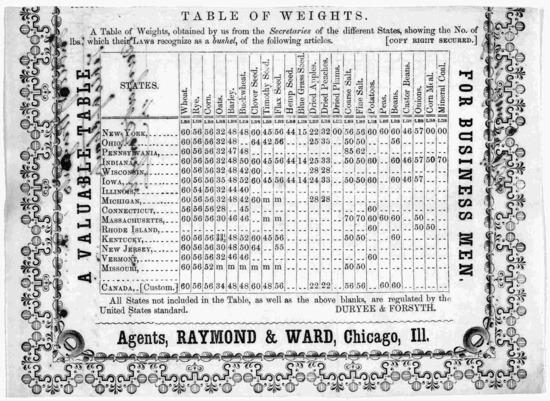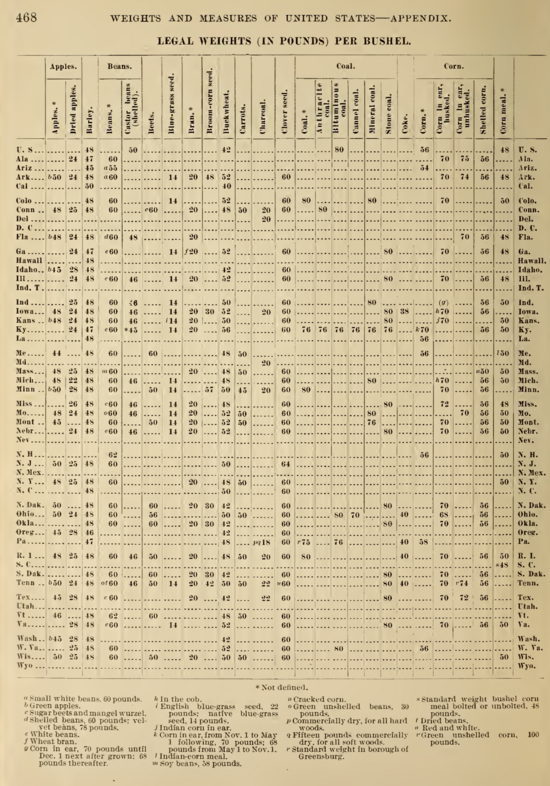Bushels Are Commodity-Specific |
March 14th, 2023 |
| units |
Bushels are traditionally units of dry volume, and a bushel basket is about as big as one person can carry. Today they're still in common use as a standard unit for many commodities: if I look up the price of corn, oats, or soybeans I'll see prices quoted in $/bushel. But it's not just a unit of volume anymore, and hasn't been for over a century.
The problem is, volume is not conserved. If you build a railcar with a volume of 3,000 bushels you can dump more than 3,000 bushel baskets of corn into it because the bottom corn will get a bit squished. While farmers generally still work with volumetric bushels, when they sell their crops buyers pay based on weight. But they still call it bushels!
This goes back a long way: here's a table from ~1854 showing how everyone (except MO) agrees that a bushel of corn means 56lb, or everyone (except CT) agrees a bushel of wheat means 60lb:
As you can see, these amounts varied by state, and still do. Here's RI law:
§ 47-4-2. Weights of bushels, barrels, and tons of specific commodities.The legal weights of certain commodities in the state of Rhode Island shall be as follows:
- A bushel of apples shall weigh forty-eight pounds (48 lbs.).
- A bushel of apples, dried, shall weigh twenty-five pounds (25 lbs.).
- A bushel of apple seed shall weigh forty pounds (40 lbs.).
- A bushel of barley shall weigh forty-eight pounds (48 lbs.).
- A bushel of beans shall weigh sixty pounds (60 lbs.).
- [38 more bushel definitions]
And here's IL law:
§152, Weights & Measures Act
- Alfalfa Seed: 60 Pounds
- Apples, Green: 47 Pounds
- Apples, Dried: 24 Pounds
- Barley: 48 Pounds
- Beans, Green or String: 24 Pounds
- [56 more bushel definitions]
Of the first three matching ones (apples, dried apples, barley), only the barley definition is consistent.
In 1904 NIST published Laws Concerning the Weights and Measures of the United States which included an attempt to collect every relevant state-level law, ending with a 4-page appendix summarizing the state-level per-commodity bushel definitions:
I'm curious how this is handled with national-level markets: does everyone use IL bushel definitions because that's where the CME is based? Are there now USDA definitions and the state definitions are still on the books but don't do anything? There's so much nested complexity here and I love it.
Comment via: facebook, lesswrong, mastodon, substack

